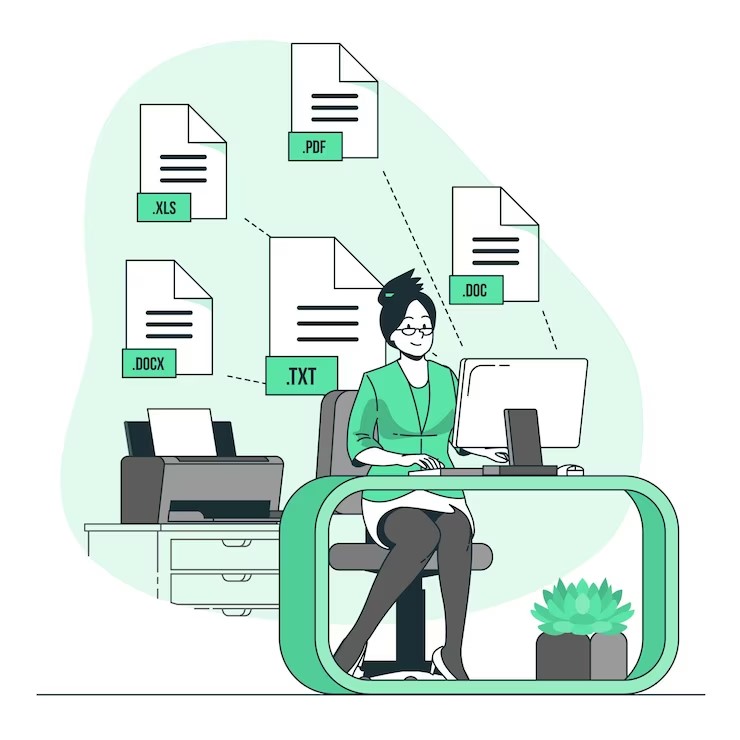
Enterprise document and records management systems (EDRMS) are essential tools for any organization that needs to keep track of their documents and records. They are designed to help organizations save time and money, reduce rwisk, and ensure compliance with legal requirements. However, an EDRMS can create more problems than it solves if not correctly implemented and managed.
Before discussing the need for compliance, let’s have an overview of why we have an enterprise documents and records management system:
- To ensure the safety and confidentiality of vital information
- To maintain the accuracy and integrity of records
- To facilitate storage and retrieval of documents and records
- To stay in agreement with legal and regulatory requirements
- To reduce paper storage costs
- To streamline business processes
- To improve access to information
- To enable quick retrieval of information
- To reduce data duplication
- To enable collaboration between multiple users
- To enable efficient archiving and disposal of documents and records
- To ensure corporate governance and accountability
To ensure compliance with an EDRMS, it is important to clearly understand the system, develop policies and procedures, train staff, and monitor the system. To start, it is necessary to understand what an EDRMS is and how it works. An EDRMS is a software system that helps an organization to store, manage, and track documents and records. It typically includes version control, security, search capabilities, and auditing features. The system should also be easy for users to access and use.
For an enterprise document and records management system to be successful, organizations must ensure compliance with the policies and procedures governing these systems. When handled correctly, an effective document and records management system can help reduce costs, minimize risks, and increase efficiency.
Therefore, the following measures should be taken by organizations to ensure compliance with an enterprise document and records management system:
- Establish Comprehensive Policies: This is a critical first step in ensuring compliance with an enterprise document and records management system. These policies should include governance processes, standards for recordkeeping, data protection and retention requirements, and a clear plan of action if regulations are broken or breached. It is vital to involve all stakeholders when drafting these policies so that everyone is on the same page and fully aware of their roles and responsibilities.
- Train Staff: Once the policies are in place, staff must receive thorough training on using the system appropriately. This will ensure they understand the expectations, guidelines, and rules surrounding an enterprise document and records management system. In addition, it is essential to provide regular refresher courses to ensure staff stay up-to-date with any changes or advancements that may be made over time.
- Monitor System Activity: Organizations should monitor user activity within the system regularly to detect any potential breaches or violations of policy. If suspicious activity is detected, organizations should investigate further in order to determine if there has been a breach of policy or regulations.
- Audit System: Auditing the system regularly is also essential to assess its effectiveness and ensure compliance with the various policies and procedures that govern the system. Organizations need to document any findings from these audits, as well as any corrective actions taken, in order to track progress over time.
- Encourage Reporting of Breaches: Organizations should also encourage employees to report breaches or policy violations when they occur to help reduce risk and increase accountability. In addition, it can be beneficial for organizations to have a process in place whereby employees can receive feedback on their performance within the system to improve overall accuracy and efficiency.
Here is a list of the key components of records EDRMS compliance:
- Include effective practices for record-keeping in routine tasks.
- Ensure all employees are aware of RIM policies and the value of observing them.
- Implement best practices proactively to avoid problems with non-compliance or document loss.
- Enforce security procedures to stop data leaks and protect important papers and client information.
- Make that electronic records are shielded from theft, hacking, and deletion by mistake.
Systems for managing documents (DMS) make it easier to keep track of, monitor, and record documents. To establish the system, it is advisable to use the services of a knowledgeable document management business.
By taking the necessary steps to ensure compliance with an enterprise document and records management system, organizations can help reduce risk, increase efficiency, and save money in the long run. By establishing comprehensive policies, training staff, monitoring user activity within the system, auditing the system regularly and encouraging the reporting of breaches or violations of a policy when they occur, organizations can help ensure their documents and records management system is secure and effective.